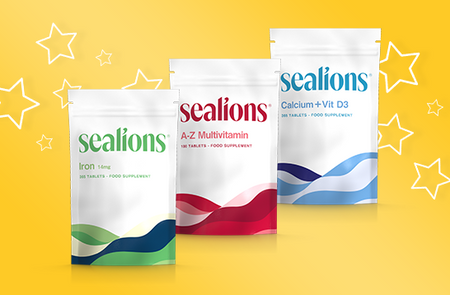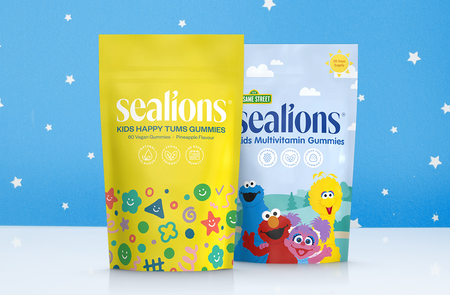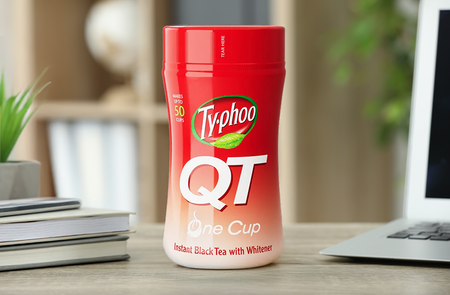
Why Men’s And Women’s Bodies Need Different Care
When it comes to health and wellness, there isn’t an all-in-one solution that suits everybody. Both men’s and women’s bodies function differently at a biological level. This can be from hormones and metabolism to bone and heart health. It’s important that we understand these distinctions, so we’re able to give our bodies the correct vitamins and nutrition it needs.
Hormonal Regulation
Women
Oestrogen is the centre of women’s hormone health, but its levels do fluctuate throughout a woman’s lifespan such as the menstrual cycle, pregnancy, and menopause[1]. These hormonal shifts can influence and change everything from mood and energy to metabolism. Hormones can also impact how the body uses essential nutrients such as iron, calcium, and B vitamins, which means women’s dietary needs can change from month to month or year to year.
Men
Men’s hormones tend to be more stable. Testosterone is the main focus on male hormone health[2], and can influence muscle growth, metabolism, and red blood cell production. While testosterone levels do decline with age, the change is gradual, leading to a slower shift in overall health needs. While the needs may be less obvious, it’s still essential that the male body gets essential nutrients such as vitamin D, zinc and magnesium.
Muscle Mass & Body Composition
Men
Men generally have more lean muscle mass, which contributes to a higher resting metabolic rate. This means they often need more energy and protein [3]to maintain muscle and support recovery, especially if they’re active or strength training regularly. The best sources of protein are naturally through food, but nutrition such as whey protein powder can help. Additionally, with energy, supplements like creatine monohydrate, zinc and magnesium can help elevate energy levels.
Women
Women naturally have a higher percentage of body fat and less muscle mass than men[4]. This can affect metabolism, meaning women typically burn fewer calories at rest. As a result, their bodies use nutrients differently, prioritising fat storage and energy balance. The best way to maintain these levels are B vitamins, omega-3 and probiotics.
Bone Health
Women
After menopause, declining oestrogen levels accelerate bone loss. This makes women more susceptible to osteoporosis and fractures[5]. Adequate calcium, vitamin D, and weight-bearing exercise are essential for maintaining bone strength throughout life.
Men
Men do also experience bone loss, but usually more gradually and later in life. Lower testosterone levels can contribute to weaker bones[6], so maintaining hormonal balance, staying active, and getting enough nutrients such as calcium, vitamin D and vitamin K2 remain important.
Iron & Blood Health
Men
Men generally have higher iron stores, but too much iron can actually raise cardiovascular risks[7]. For men, moderation and awareness around supplements are very important - especially if their diet already provides plenty of iron.
Women
Because of menstruation, women lose blood regularly, which increases the risk of iron deficiency or anemia[8]. Eating iron rich foods like red meat, lentils and greens alongside vitamin C for better absorption - all can help maintain healthy levels.
Reproductive Health
Women
Women experience changing nutritional needs throughout life. Examples of this are during menstruation, pregnancy, breastfeeding, and menopause. All of these stages all require tailored care to support hormonal balance and reproductive health. If nutrition is not enough to support the full needs, supplements can help with this such as folate (vitamin B9), coenzyme and evening primrose oil.
Men
For men, reproductive health largely centers on sperm quality and testosterone balance. Nutrients and supplements such as zinc, selenium, and omega-3 fatty acids can help support healthy sperm production and prostate function[9]. Strength training and moderate cardio can also support testosterone production - however, it’s important to understand that excessive endurance exercise can lower testosterone if overdone.
Understanding men’s and women’s bodies function differently at biological, hormonal, and physiological levels is important. By recognising and addressing each of our specific health needs, we can promote long-term vitality, hormonal balance, and overall quality of life.
[1]Santoro N, Epperson CN, Mathews SB. Menopausal Symptoms and Their Management. Endocrinol Metab Clin North Am. 2015 Sep;44(3):497-515. doi: 10.1016/j.ecl.2015.05.001. PMID: 26316239; PMCID: PMC4890704.
[2]Institute of Medicine (US) Committee on Assessing the Need for Clinical Trials of Testosterone Replacement Therapy; Liverman CT, Blazer DG, editors. Testosterone and Aging: Clinical Research Directions. Washington (DC): National Academies Press (US); 2004. 2, Testosterone and Health Outcomes. Available from: https://www.ncbi.nlm.nih.gov/books/NBK216175/
[3]Nunes EA, Colenso-Semple L, McKellar SR, Yau T, Ali MU, Fitzpatrick-Lewis D, Sherifali D, Gaudichon C, Tomé D, Atherton PJ, Robles MC, Naranjo-Modad S, Braun M, Landi F, Phillips SM. Systematic review and meta-analysis of protein intake to support muscle mass and function in healthy adults. J Cachexia Sarcopenia Muscle. 2022 Apr;13(2):795-810. doi: 10.1002/jcsm.12922. Epub 2022 Feb 20. PMID: 35187864; PMCID: PMC8978023.
[4]Blaak E. Gender differences in fat metabolism. Curr Opin Clin Nutr Metab Care. 2001 Nov;4(6):499-502. doi: 10.1097/00075197-200111000-00006. PMID: 11706283.
[5]Alswat KA. Gender Disparities in Osteoporosis. J Clin Med Res. 2017 May;9(5):382-387. doi: 10.14740/jocmr2970w. Epub 2017 Apr 1. PMID: 28392857; PMCID: PMC5380170.
[6]Shigehara K, Izumi K, Kadono Y, Mizokami A. Testosterone and Bone Health in Men: A Narrative Review. J Clin Med. 2021 Feb 2;10(3):530. doi: 10.3390/jcm10030530. PMID: 33540526; PMCID: PMC7867125.
[7]Betai D, Ahmed AS, Saxena P, Rashid H, Patel H, Shahzadi A, Mowo-Wale AG, Nazir Z. Gender Disparities in Cardiovascular Disease and Their Management: A Review. Cureus. 2024 May 5;16(5):e59663. doi: 10.7759/cureus.59663. PMID: 38836150; PMCID: PMC11148660.
[8]Munro MG, Mast AE, Powers JM, Kouides PA, O'Brien SH, Richards T, Lavin M, Levy BS. The relationship between heavy menstrual bleeding, iron deficiency, and iron deficiency anemia. Am J Obstet Gynecol. 2023 Jul;229(1):1-9. doi: 10.1016/j.ajog.2023.01.017. Epub 2023 Jan 24. PMID: 36706856.
[9]Skoracka K, Eder P, Łykowska-Szuber L, Dobrowolska A, Krela-Kaźmierczak I. Diet and Nutritional Factors in Male (In)fertility-Underestimated Factors. J Clin Med. 2020 May 9;9(5):1400. doi: 10.3390/jcm9051400. PMID: 32397485; PMCID: PMC7291266.
Tagged:









